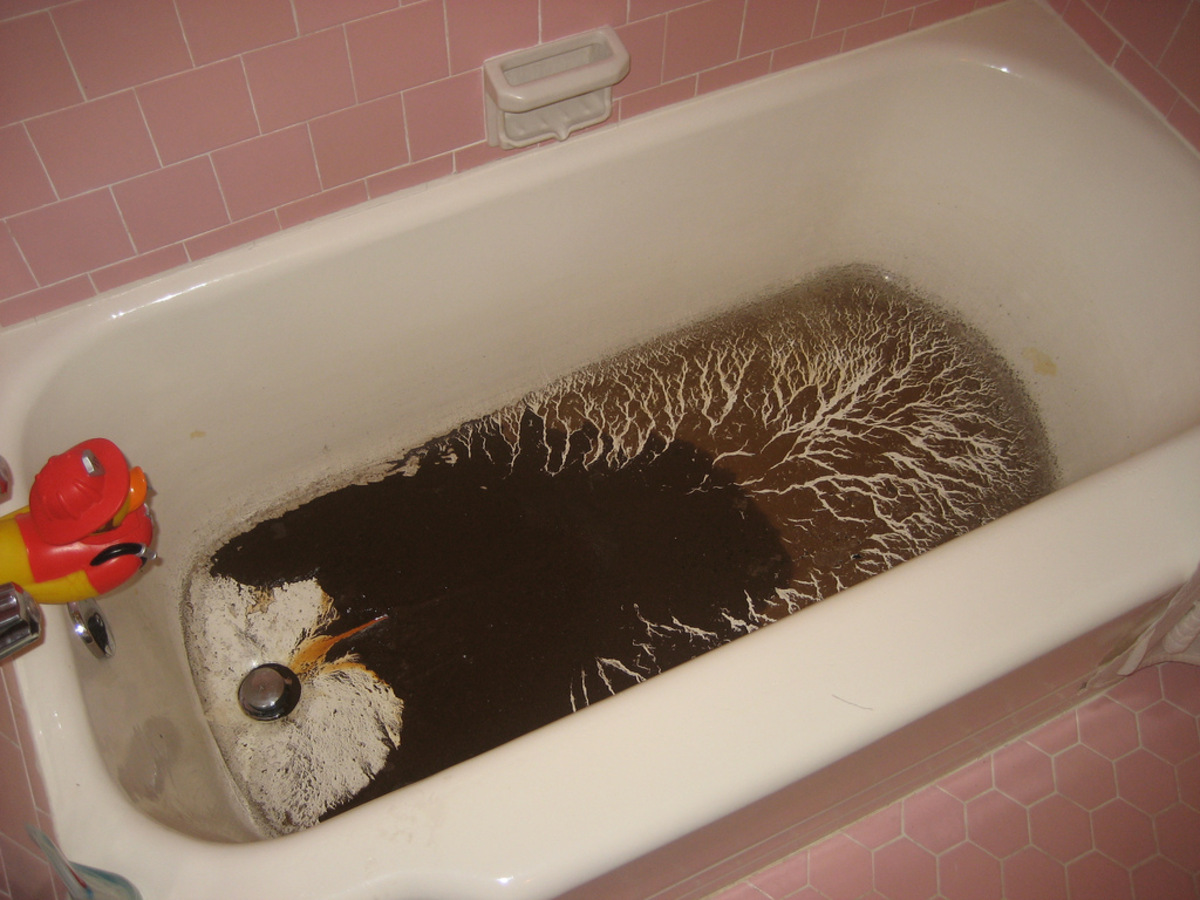Revealing the Causes of Sewage in the Bathtub
Revealing the Causes of Sewage in the Bathtub
Blog Article
How do you feel on the subject of What To Do If Sewage Starts Backing Up Into the Shower?

Sewage back-up in the bathtub can be a distressing and unsanitary trouble for any type of home owner. Not only is it bothersome, but it likewise presents serious health and wellness threats and shows underlying issues with the plumbing system. Understanding why sewer is showing up via the tub is crucial for taking suitable activity to attend to the problem efficiently.
Intro to the Issue
Recognizing the Issue
When sewer starts backing up right into the bath tub, it's a clear indicator of a trouble with the drainage system. The wastewater that should be streaming away from your home is rather finding its back into your home, which can result in significant damage and carcinogen.
Possible Reasons
A number of elements can contribute to sewer backup in the bathtub. From clogs in the sewage system line to concerns with the plumbing framework, determining the source is essential for locating a remedy.
Common Factors for Sewer Backup
Clogs in the Drain Line
Among one of the most usual root causes of sewer backup is a clog in the drain line. This can happen as a result of the accumulation of debris, grease, or foreign items in the pipes, avoiding correct flow and causing sewer to support into your tub.
Tree Root Invasion
Tree roots seeking wetness and nutrients can infiltrate drain lines with small fractures or joints. With time, these origins can grow and increase, creating substantial damage to the pipelines and causing sewage back-up concerns.
Aging Framework
Older homes might have dated plumbing systems that are more susceptible to rust, splits, and damage. As pipelines age, they become more susceptible to leaks and obstructions, boosting the likelihood of sewer back-up occurrences.
Heavy Rainfall or Flooding
Throughout periods of heavy rainfall or flooding, the drain system may become overloaded with excess water, creating backups and overflows. This can cause sewer backing up right into tubs and other fixtures inside the home.
Wellness Risks Connected With Sewage Backup
Contamination of Water Supply
Sewage back-up can contaminate the water in your house, posing a major wellness danger to you and your household. Exposure to infected water can cause intestinal problems, skin infections, and various other ailments.
Spread of Illness
Sewer consists of damaging bacteria, viruses, and parasites that can trigger a series of diseases, consisting of liver disease, cholera, and gastroenteritis. Entering into contact with sewer or infected surfaces places you at risk of infection.
Mold and mildew Development
Wetness from sewage back-up can develop perfect problems for mold development in your house. Mold and mildew spores can aggravate respiratory issues and create allergic reactions in delicate people, making prompt cleanup important.
Indications of Sewer Back-up
Foul Odors
Undesirable smells rising from drains or components, especially in the bathroom, might suggest sewer back-up issues. These odors are typically solid and consistent, signaling a trouble that requires prompt interest.
Slow Draining Fixtures
Bath tubs, sinks, and bathrooms that drain pipes gradually or otherwise at all could be experiencing sewer backup. If several fixtures are affected at the same time, it's likely that the issue originates from a common factor, such as the primary sewer line.
Gurgling Sounds
Weird gurgling or gurgling noises coming from drains when water is running somewhere else in your home are a measure of air caught in the plumbing system. This air buildup can arise from sewer backup and ought to be checked out quickly.
Immediate Actions to Take
Switching Off Water System
In case of sewer back-up, it's vital to shut off the water system to avoid more contamination and damage. Find the primary water shutoff valve in your home and closed it off until the problem can be fixed.
Speaking To a Professional Plumber
Handling sewer backup is not a DIY work. Call a certified plumber with experience in handling sewage-related concerns to assess the scenario and carry out needed repair work or clean-ups.
Preventing Contact with Polluted Water
Till the sewage backup is settled, prevent contact with infected water to prevent the spread of bacteria and pathogens. Use protective gear if you need to remain in the damaged location and clean your hands thoroughly later.
Safety nets
Routine Maintenance of Sewer Lines
Set up routine inspections and maintenance of your sewer lines to recognize and deal with possible problems before they escalate into major troubles. This can consist of clearing out debris, evaluating for tree origin intrusion, and fixing any kind of damaged pipelines.
Mounting Backwater Valves
Consider mounting backwater shutoffs in your plumbing system to avoid sewer from flowing back right into your home throughout periods of heavy rainfall or flooding. These valves automatically close when water draws back up, shielding your home from contamination.
Correct Disposal of House Waste
Avoid purging anything besides toilet paper and human waste down the toilet to prevent blockages and obstructions in the drain line. Dispose of oil, oil, and other house chemicals appropriately to minimize the danger of plumbing issues.
Cleaning Up After Sewer Backup
Sanitation Procedures
Completely sanitize and sanitize impacted locations after sewer backup to remove hazardous microorganisms and prevent mold growth. Use ideal cleaning products and protective gear to guarantee safe and efficient cleanup.
Remediation of Affected Areas
Repair any type of damage to floor covering, walls, or components triggered by sewer backup. Depending on the extent of the damages, you might require to replace carpets, drywall, or various other products to recover your home to its pre-loss condition.
Why Is Water Backing Up in My Bathtub When I Flush My Toilet?
What to do about a sewer line clog
First, don’t bother with plunging. No amount of plunging will dislodge the clog in a sewer line. The clog is too far away. Plungers are for clogs in the toilet itself, not the sewer line. Plus, the most likely causes of a sewer clog are:
Tree roots Flushed toys or feminine products Grease buildup Those items don’t move easily. And in the case of tree roots, the roots need to be cut out of the pipe and the pipe will need to be repaired.
You’ll need a closet auger. A closet auger is a type of plumber’s snake with a protective cover to keep from scratching the delicate porcelain toilet. If the clog is further down, you may need to remove the toilet or use one of your cleanouts to get to the clog.
We also recommend doing a video inspection of the drain to ensure that the cause of the clog has been completely removed. Otherwise, you could have the same problem again in a few days or weeks.
https://mspplumbingheatingair.com/blog/why-is-water-backing-up-in-my-bathtub-when-i-flush-my-toilet

As a fervent person who reads about What to Do if Sewage Starts Coming Up Through Your Bathtub, I was thinking sharing that post was a good idea. Appreciated our blog posting? Please share it. Let somebody else check it out. Thanks so much for going through it.
Click Here
Report this page